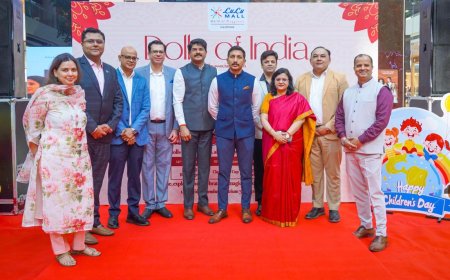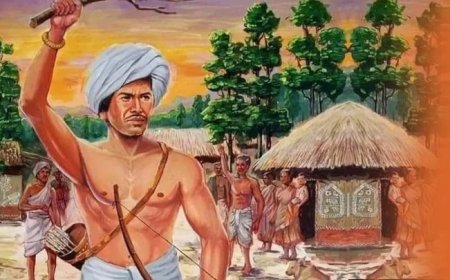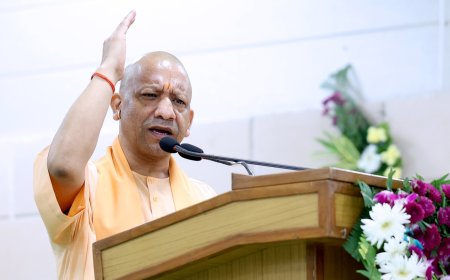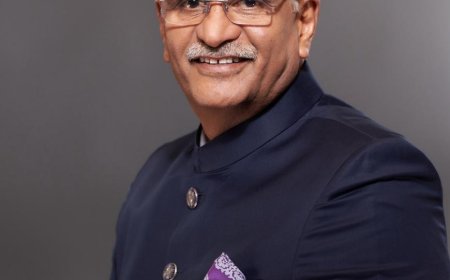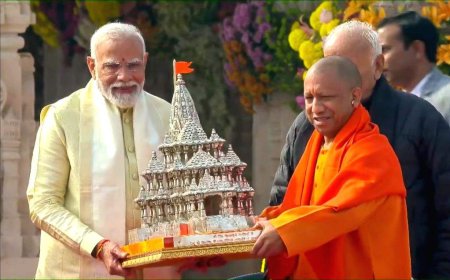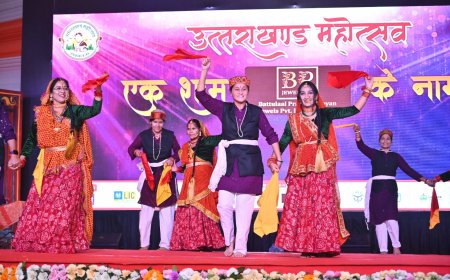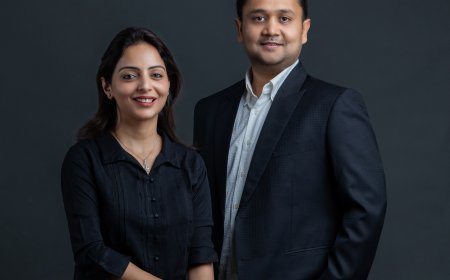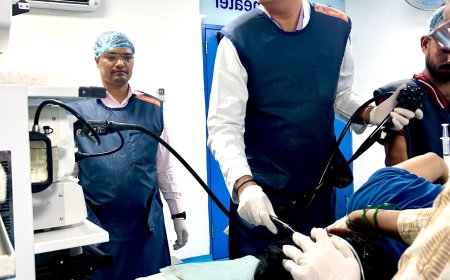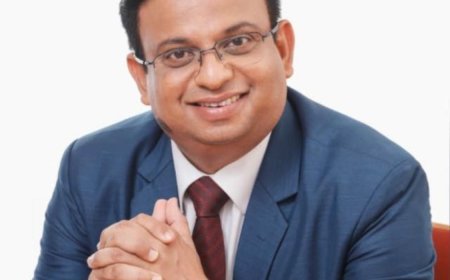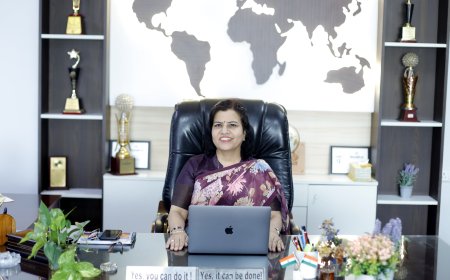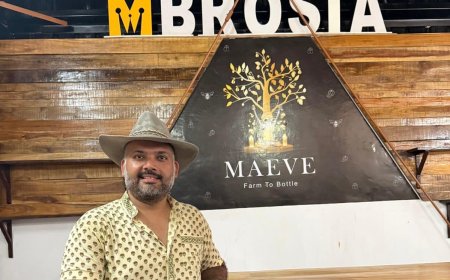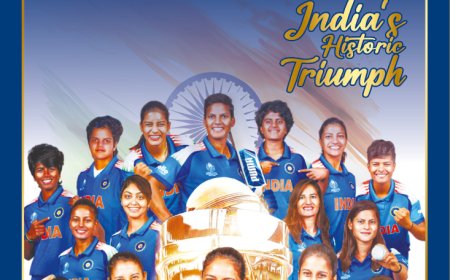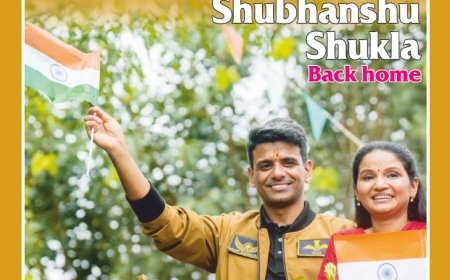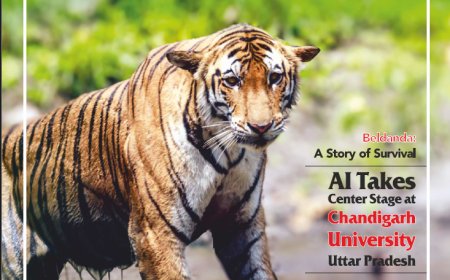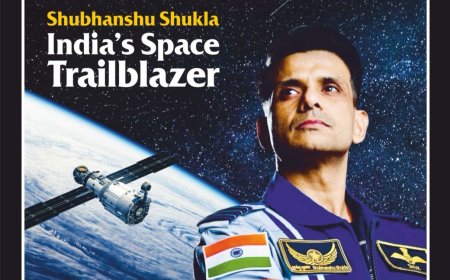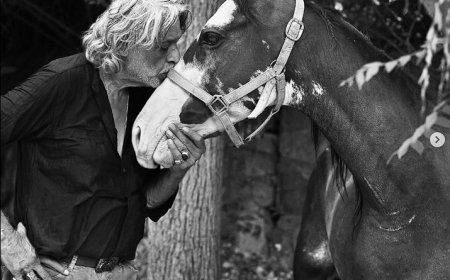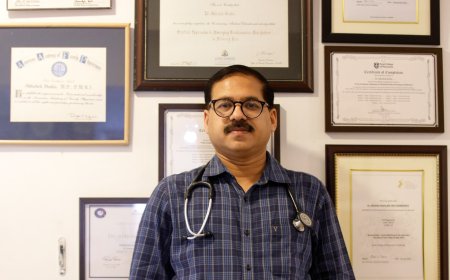Dr. Sanjai Kumar Srivastava’s Exclusive Interview
Robotics, AI & Precision: The Future of Surgery is Already Here
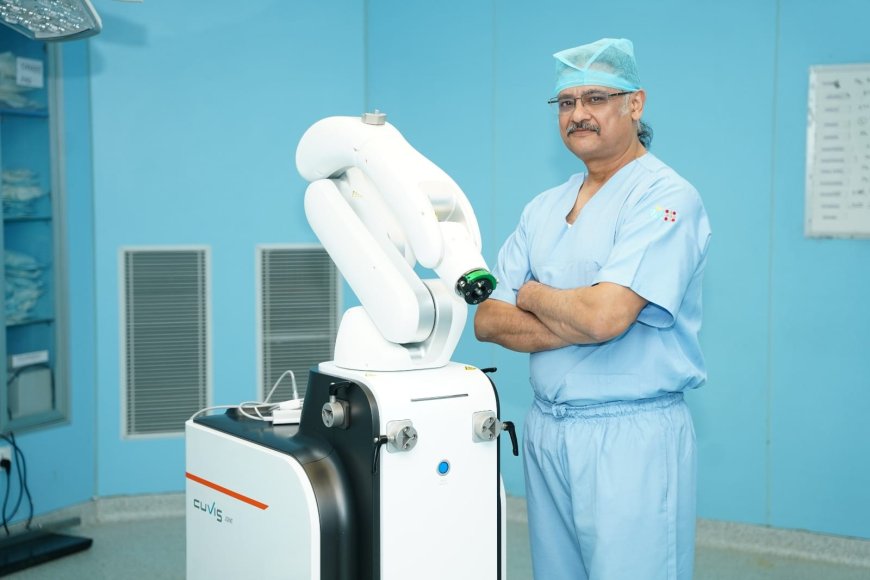
Arijit Bose
From a young boy who never meant to become a doctor to a globally trained orthopaedic pioneer transforming joint surgery in India —the 35 pus year journey of Dr. Sanjai Kumar Srivastava, Chairman orthopaedic surgery and head of the dept, Apollomedics Super Speciality Hospital is one of serendipity, resilience, and relentless pursuit of excellence. In an exclusive interview, the doctor who boasts of a repertoire that includes prestigious roles in Indian Orthopaedic Association, Indian Orthopaedic Society, the U.P. Arthroscopic Society talks about his destined entry into medicine, revolutionary work in joint replacement and arthroscopic surgery, and how he continues to train the next generation of surgeons. With over 22,000 surgeries under his belt, Dr. Sanjai Kumar Srivastava remains a humble learner and a passionate teacher.
Q: Sir, your journey into medicine was more accidental than intentional. Can you take us through how it all began?
Yes, absolutely. I actually never wanted to become a doctor. I had always aspired to be an engineer. But when my father was transferred to Lucknow, there were no math seats available, so I had to opt for biology. I told myself I would later do intermediate with math again to return to engineering. I was just 15 at the time — underage for medical entrance. So I did two years of B.Sc. before finally joining King George Medical College in 1984. Ironically, I topped the UP entrance exam that year. Destiny clearly had other plans.
Q: From someone reluctant to pursue medicine to becoming a celebrated orthopaedic surgeon, how did the transformation happen?
I always say I am an orthopaedic surgeon by destiny, not by choice. But once I committed, I gave it everything. I did my MBBS and MS from KGMC and went on to train in the best centres around the world for joint surgery. Name a country, I’ve been there — observing, learning, practicing. That exposure transformed my perspective and honed my skills.
Q: With over 22,000 surgeries, what’s one case that still moves you emotionally?
There are countless, but one patient I can never forget. A young boy with bilateral hip fractures was operated on nine times elsewhere and arrived at my clinic almost on his deathbed due to rampant infection. His father pleaded with me to save him. We cleaned the infection, did three reconstructive surgeries, and brought him back to life. Today, 20 years later, he walks, works, and leads a normal life. That’s the kind of story that stays with you forever. There are N number of such stories in 35 yr or orthopaedic journey.
Q: You’ve held prestigious positions like President of the Indian Orthopaedic Society and the UP Arthroscopic Society. How has this influenced your approach to surgery and training?
A lot. Back when I started, there was no internet, no YouTube tutorials, and no webinars. If you wanted to learn, you had to travel, spend time and money — which was not easy. Now, through these associations, I can give back. I organize workshops, cadaveric labs, and seminars so the new generation of doctors don’t have to struggle the way we did. It’s about sharing knowledge and building a stronger community.
Q: You stress a lot on global exposure. How important is that for a surgeon’s evolution?
Crucial. Every surgeon develops their own technique and style. When you visit ten surgeons across the world, you learn ten different methods — and create a hybrid of excellence. Whether it’s someone in South Africa doing world-class shoulder surgeries or someone in Europe leading arthroscopy — each teaches you something new. That’s how you evolve.

Q: How do you maintain high precision and patient safety during complex surgeries?
We follow standard protocols, of course. But if I encounter a rare case, I study it deeply, read up, and often consult peers. No shame in saying “I don’t know” if it means a better outcome for the patient. Sharing insights with colleagues leads to sharper decision-making and safer surgeries.
Q: What developments in arthroscopic and reconstructive surgery excite you the most?
Arthroscopy — or keyhole surgery — is a game-changer. It causes less trauma, less pain, faster recovery, and restores higher functional capacity. Initially developed for athletes, it is now used in almost every kind of joint surgery. I just returned from Poland where I trained at a FIFA-recognized centre that handles world-class athletes with such surgeries. It's remarkable how quickly they return to top performance.
Q: Are Indian centres and surgeons also matching up globally now?
Without a doubt. We’re doing world-class work here. Some of my patients have returned to IPL after knee surgeries. One of them is a triathlon world silver medallist — a sport that demands extreme stamina. It’s not just about recovery; it’s about restoring peak performance.
Q: You’ve also made major contributions in managing complex acetabular fractures. Could you elaborate?
Yes, acetabular fractures are complex. Back in my medical school days, they were treated with traction and rest — but this led to joint destruction and early replacement. I felt that had to change. I trained abroad, came back, and now we conduct annual cadaveric workshops to teach young surgeons the advanced techniques. It’s hands-on, practical learning — which creates real impact. Today, many of our trained young surgeons in UP are confidently handling such cases, and that’s immensely satisfying.
Q: You developed a custom-made, patient-specific TKR system in India with Striker. What was the impact?
It was a significant leap. We developed this in 2009. A patient’s CT scan was used to create customized surgical jigs, ensuring precise alignment of the new knee joint. It revolutionized how we approached knee replacement. Unfortunately, due to policy constraints and pricing caps, the project was shelved. It was a lost opportunity — this could have been exported globally.
Q: With the rise of AI and robotics, have you integrated that into your practice?
Absolutely. I was the first surgeon in UP to introduce AI-powered robotic knee replacement — at Apollo. We’ve done over 300 robotic surgeries in the past 1.5 years. This technology ensures unmatched accuracy and personalization. The robotic system is the evolved version of the TKR system we created. It blends surgeon’s experience and AI planning with precise execution, improving surgical outcomes remarkably.
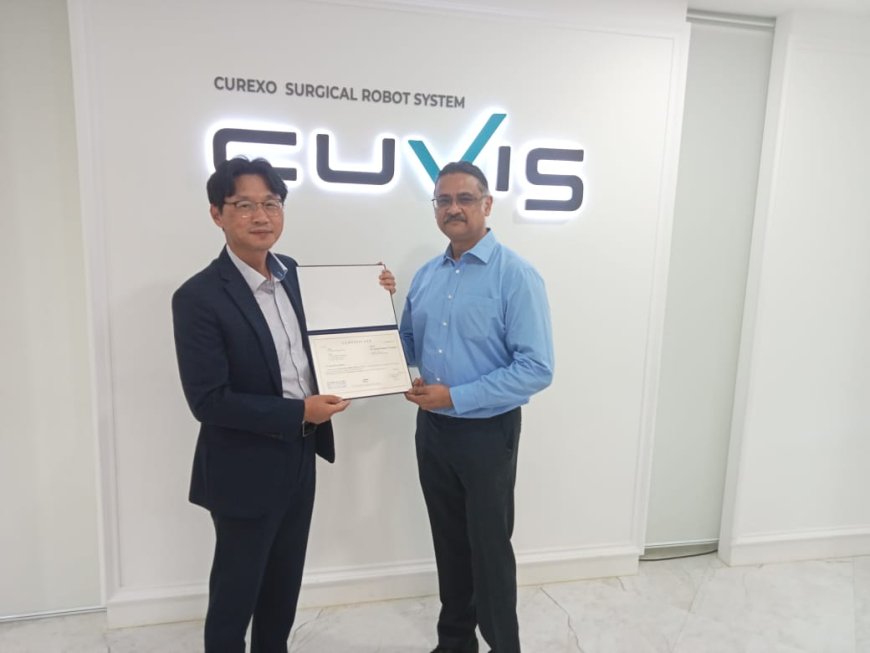
What's Your Reaction?







